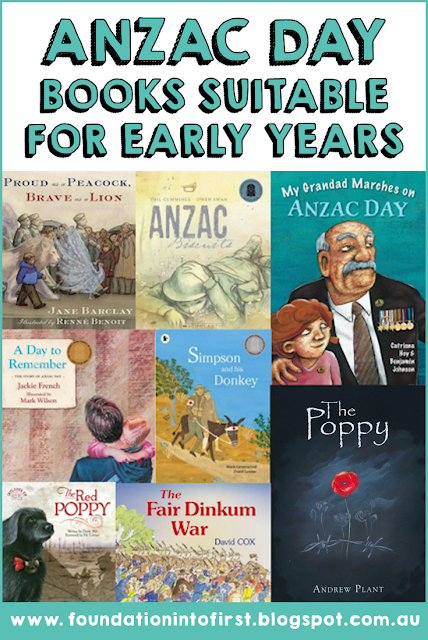Discussing ANZAC Day (Australia and New Zealand Army Corps Day) can be difficult with young students due to its possibly distressing content of war and death. However, it's essential that young students understand the importance of this commemoration on the 25th April every year for both Australia and New Zealand. In this blog post you will find some suggestions for introducing the big concepts around ANZAC Day into your early years classroom in a sensitive and appropriate manner. As I am an Australian teacher I have only covered the ANZAC Day concepts from the Australian perspective. However, feel free to leave some links to resources for New Zealand teachers in the comments section below.
Gallipoli was a long way to travel.
This is a difficult concepts for very young students to grasp but it is an important one to cover. Young men were sent a long way away from their families to a place they had never been to. Some never came home - this is why we remember them.
The example below is from the ANZAC Day Activity Pack where students can locate Gallipoli on the map and consider its distance from Australia.
What does ANZAC Day mean to you?
A good writing activity after your lesson on the ANZACs, is to have students write a response about what ANZAC Day means to them. Try this craft (pictured below) from the ANZAC Day Activity Pack where students can place their writing for a wall display in the classroom.
ANZAC Day is a commemoration not a celebration.
Do your students understand the difference between a commemoration and a celebration? This is a big concept to cover when discussing ANZAC Day but another important one. How we behave during a celebration is different to a commemoration, however, there are some similarities. This is a great activity to use when discussing the ways in which ANZAC Day is commemorated and is covered in detail in the HASS Year 3 History Unit (seen below).
Bake some ANZAC Day biscuits.
Discussing life in the trenches is hard but this book by Phil Cummings and Owen Swan called ANZAC Biscuits is a lovely tale of a little girl and her father's life in the trenches. She bakes some cookies for him and her life in the warmth of the home is compared to the life her father is having at the same time in the trenches.
You can also bring in or bake some ANZAC biscuits and this can form the basis of your study of method or sequencing. A method recount and recipe can be found in the ANZAC Day Activity Pack.
Discuss the concept of bravery.
What does it mean to be brave? What does bravery look like? Explore the concept of bravery with this lovely book by Jane Barclay called Proud as a Peacock, Brave as a Lion. It is a very touching book where animals display the qualities service men display either in battle or after war. It's also a great book for exploring what it means to be proud, both key concepts when discussing ANZAC Day.
Another great idea for early years students is to use these fantastic colouring pages to explore the difficult concepts of ANZAC Day such as how brave the ANZAC men were to live in the trenches under gun fire or how women also went to Gallipoli.
Read a book with an ANZAC theme
Listed below are some of my students' favourite books on ANZAC Day and World War 1.























